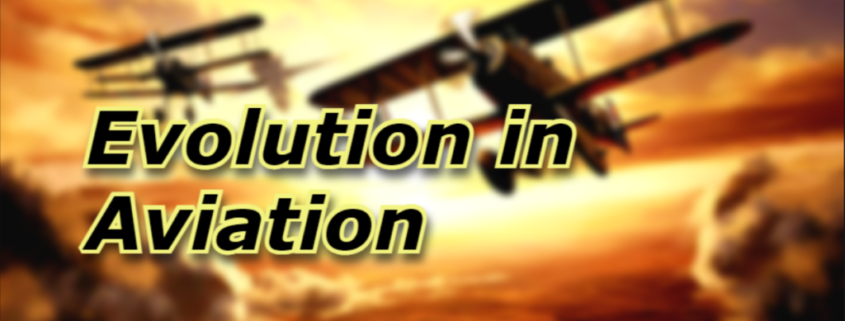Exploring the Evolution of Flight: Celebrating Aviation Milestones
In this article, we delve into the fascinating world of aviation and celebrate the remarkable milestones that have shaped the evolution of flight. From the Wright brothers’ first successful powered flight to the development of supersonic jets, each step forward has been a testament to human ingenuity and perseverance. Join us as we explore the history, innovations, and achievements that have propelled us into the age of modern air travel. Discover the stories behind these landmark moments and gain a new appreciation for the incredible advancements that makes us to soar through the skies today. Experience the thrill of adventure and the wonder of human achievement as we take you on a journey through the evolution of flight.
The early beginnings of human flight history has remained a sort of myth and mystey. It was the daring dreams of visionaries like Leonardo_da_Vinci that laid the groundwork for aerial aspirations. His complicated sketches and designs included the ornithopter. It was a machine mimicking bird-like flight. It ignited a spark that would eventually blaze into reality. As centuries unfolded, fearless inventors and pioneers ventured into uncharted skies, driven by an unending curiosity to defy gravity’s constraints.
From Sir George Cayley’s pioneering work on aerodynamics to Otto Lilienthal’s daring glider experiments, each incremental step brought humanity closer to realizing its age-old dream of flight.
The early explorers of flight dared to embrace uncertainty and challenge convention, paving a path illuminated by courage and ingenuity. Their legacy resonates through time as a testament to human resilience and determination in pursuit of reaching new heights.
The Wright Brothers and the First Powered Flight
The Wright Brothers, Orville and Wilbur, are revered as pioneers of aviation. In 1903, in Kitty Hawk, North Carolina, they achieved the first sustained and controlled powered flight. With their innovative design and determination, they defied gravity. It opened up a new era of human possibility high above the earth’s surface.The aircraft that Orville piloted on that historic day was the Wright Flyer I. This biplane had a wingspan of 40 feet and was powered by a 12-horsepower engine. As it soared for 12 seconds over a distance of 120 feet, it marked a monumental leap in mankind’s quest to conquer the skies.
Their groundbreaking achievement not only revolutionized transportation but also sparked a wave of inspiration for future aviators and engineers. The legacy of the Wright Brothers serves as a reminder that with vision, innovation, and unwavering determination, even the wildest dreams can take flight against all odds.
Advancements in Aviation Technology
Advancements in Aviation Technology:In the realm of aviation technology, the relentless pursuit of innovation has propelled mankind to soaring heights. From the development of more powerful engines to the refinement of aerodynamic designs, each advancement has played a pivotal role in shaping the way we traverse the skies. The evolution of materials such as lightweight composites and advanced alloys has revolutionized aircraft construction, enhancing both performance and safety.
Furthermore, the integration of cutting-edge avionics systems has transformed how pilots navigate through the vast expanse of airspace. Fly-by-wire technology, GPS navigation, and sophisticated autopilot systems have not only made flying more efficient but also significantly safer. These technological marvels have enabled aircraft to become more agile, reliable, and capable than ever before.
As we marvel at these incredible technological achievements that have defined modern aviation, it becomes evident that the sky is no longer the limit. With each new breakthrough comes a renewed sense of optimism and possibility for what lies ahead in our journey through the endless horizons above.
The Golden Age of Aviation
During the early to mid-20th century, aviation experienced a period known as the Golden Age, characterized by advancements and daring feats. This era saw the development of faster, more efficient aircraft. It lead to groundbreaking achievements in air travel.
Aviation pioneers pushed the boundaries of what was thought possible, capturing imaginations worldwide.In this remarkable time, iconic aircraft such as the Douglas DC-3 and Boeing 707 revolutionized commercial air travel, making flying more accessible and comfortable for passengers. Aviation became a symbol of progress and innovation, inspiring a sense of wonder and excitement in people across the globe. The Golden Age of Aviation not only connected distant lands but also united humanity in a shared dream of reaching new heights together.
Major Milestones in Aviation History
One pivotal moment in the history of aviation was Charles Lindbergh’s solo transatlantic flight in 1927. It proved the feasibility of long-distance air travel. This feat captured the world’s imagination and paved the way for future aviation triumphs. Amelia Earhart’s solo flight across the Atlantic in 1932 marked a significant achievement for women in aviation. It broke barriers and inspiring generations to come. Her courage and determination showcased the power of perseverance and opened doors for female pilots worldwide. Earhart’s legacy continues to inspire aspiring aviators to reach new heights.
The Apollo 11 moon landing in 1969 stands as a crowning achievement in aerospace history. It showcases humanity’s boundless spirit of exploration. This historic event not only demonstrated technological prowess and symbolized unity and collaboration on a global scale. The successful moon landing remains a testament to mankind’s limitless potential and collective aspirations towards reaching for the stars.




Leave a Reply
Want to join the discussion?Feel free to contribute!